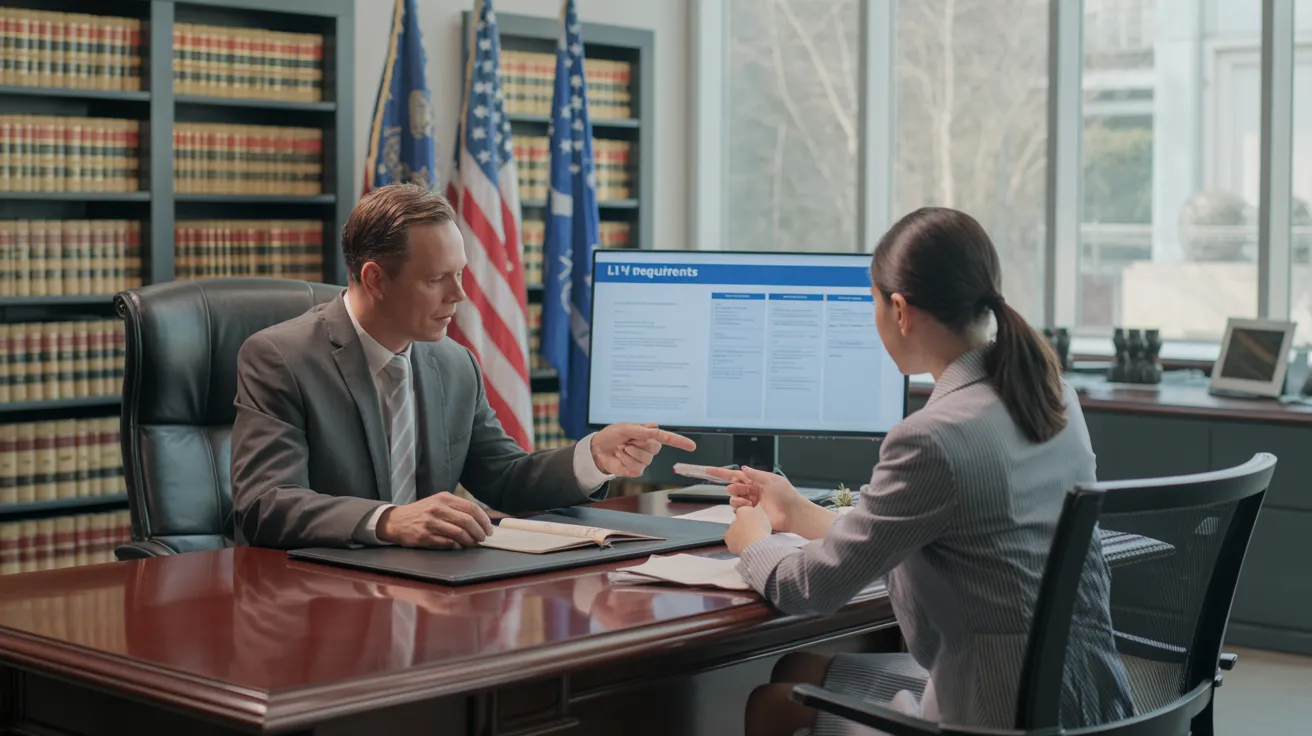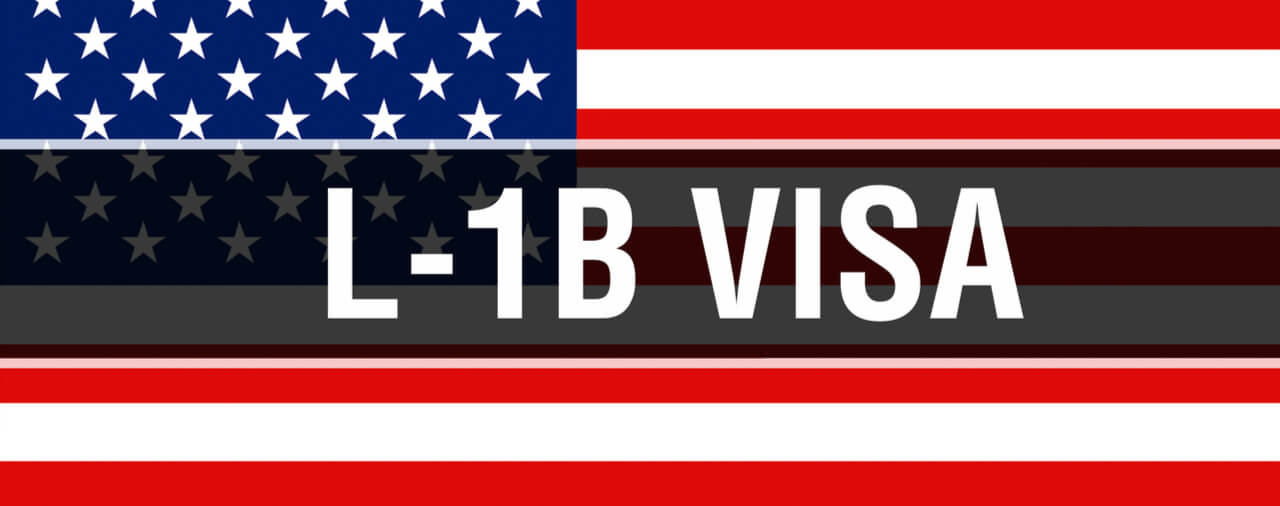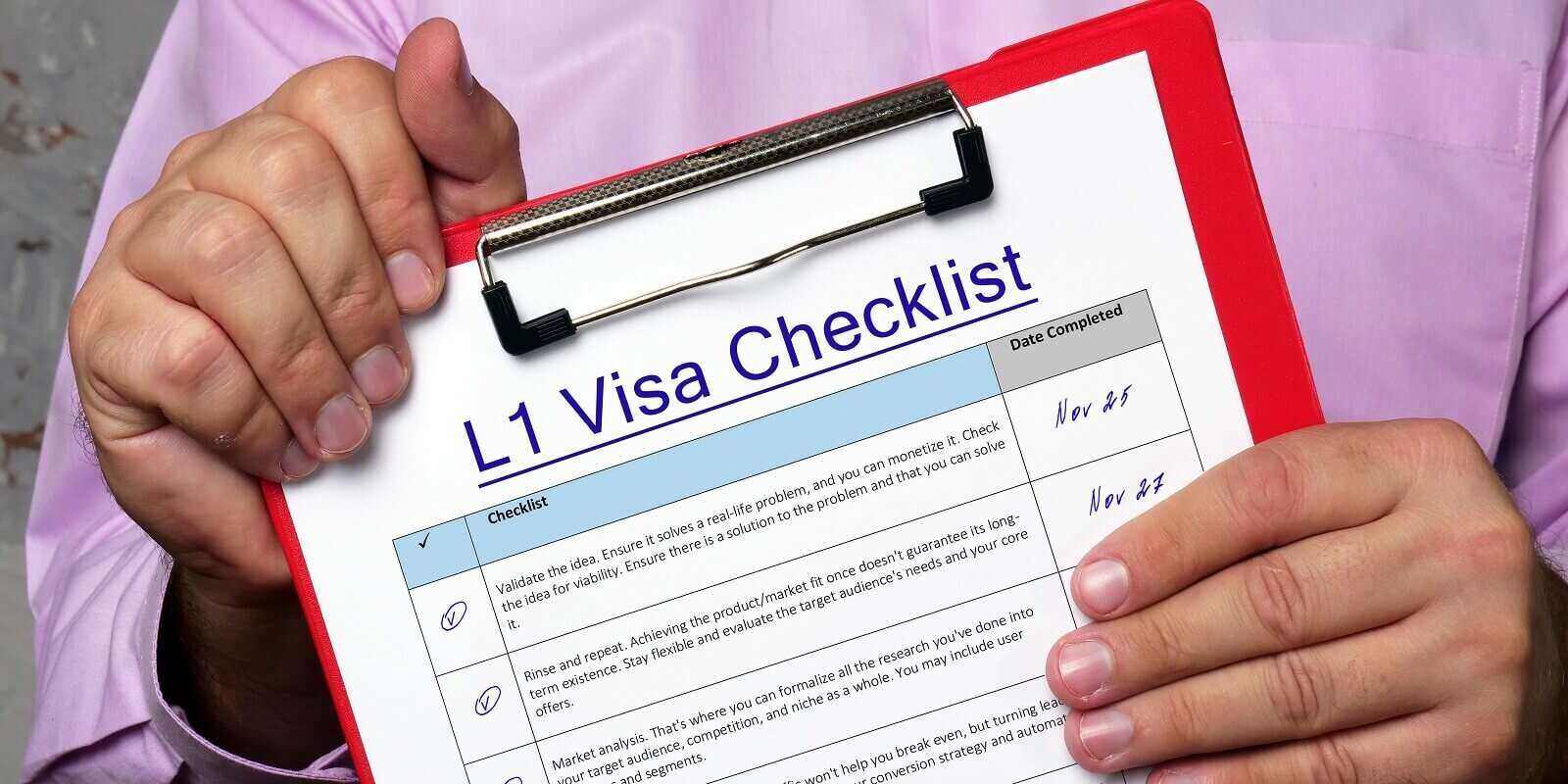L1 Visa Info
Wiki Article
Unlocking Opportunities: A Comprehensive Guide to the L1 Visa Process
The L1 visa procedure provides a vital pathway for international companies seeking to transfer key staff members throughout boundaries. Recognizing the nuances of eligibility standards, the distinctions in between L-1A and L-1B visas, and the details of the application process can considerably influence a candidate's success. However, navigating this complex landscape is not without its challenges, and careful focus to documentation and company sponsorship is essential. As we check out the key parts of this procedure, the strategies for conquering potential challenges will certainly end up being apparent, revealing just how informed preparation can open a world of opportunities.Comprehending the L1 Visa
Comprehending the L1 visa entails acknowledging its value as an important tool for multinational companies seeking to transfer proficient workers between worldwide offices. This non-immigrant visa classification facilitates the movement of execs, managers, and specialized expertise employees to the United States, consequently allowing companies to preserve operational continuity and harness worldwide ability efficiently. The L1 visa is separated into 2 primary classifications: L-1A for managers and execs, and L-1B for workers having specialized knowledge.The L1 visa offers an important role in improving a firm's competitive side in the worldwide industry - L1 Visa. By permitting companies to move their crucial personnel, businesses can assure that critical tasks are managed by certified people who are already knowledgeable about the business's society and functional processes. This inner transfer system not only promotes knowledge sharing however also advertises innovation and collaboration throughout borders.Moreover, the L1 visa is commonly favored for its reasonably straightforward application process compared to various other visa groups, as it permits twin intent, permitting holders to pursue long-term residency while on a temporary copyright. This feature makes the L1 visa particularly appealing for both companies and workers, as it enhances the path for competent specialists to develop long-term residency in the USAQualification Standards
Qualification for the L1 visa depends upon several essential standards that assure both the staff member and the employer meet specific certifications. This non-immigrant visa is created for international firms to move employees from consular services to united state counterparts.Firstly, the company needs to be a qualifying company, that includes a moms and dad company, branch, associate, or subsidiary of an U.S. company. The company must have been doing business for a minimum of one year both in the U.S. and abroad. This ensures that the firm has sufficient functional security and a reputable presence.Secondly, the employee has to hold a supervisory, executive, or specialized knowledge placement. For L1A visas, the candidate should demonstrate supervisory or executive qualifications, while L1B visas concentrate on specialized knowledge relevant to the organization's items, services, or processes. In addition, the worker should have functioned for the international entity for at the very least one constant year within the last 3 years prior to their application.Lastly, the worker's function in the united state have to line up with their previous placement, making sure that their abilities and experience are leveraged for the firm's advantage.Sorts Of L1 Visas
The L1 visa category consists of 2 key types created to help with the transfer of employees within international companies: the L1A visa for supervisors and executives, and the L1B visa for employees with specialized expertise. Each type serves distinct objectives and has certain eligibility criteria.The L1A visa is customized for individuals that hold managerial or executive positions within a company. This visa makes it possible for top-level workers to move to a united state branch, subsidiary, or affiliate of the same company. Candidates for the L1A visa must show that they have been utilized in a managerial or executive capability for a minimum of one continual year within the previous 3 years prior to their application. Furthermore, this visa offers a longer period of stay, originally provided for three years, with the opportunity of expansions for approximately seven years.In contrast, the L1B visa is meant for experts with specialized expertise pertaining to the business's products, services, or procedures. To qualify, candidates must prove that their expertise is essential to the organization and that they have helped at least one constant year within the last 3 years in a function that needed this specialized expertise. The L1B visa is initially granted for 3 years, with extensions readily available for as much as 5 years.Both visa kinds are essential for business seeking to boost their worldwide operations by leveraging skilled employees, therefore advertising innovation and effectiveness within the U.S. market.Application Process
Steering via the L1 copyright procedure entails a number of important actions that need to be diligently followed to ensure an effective outcome. The process begins with the U.S. employer, who must initially develop eligibility by demonstrating a qualifying partnership with the foreign entity and validating that the staff member meets the certain demands for the L1 visa category being sought.Once qualification is confirmed, the company initiates the procedure by filing Kind I-129, the Application for a Nonimmigrant Employee, with the United State Citizenship and Migration Solutions (USCIS) This type should be accompanied by a comprehensive description of the job obligations to be done, the business structure of both the united state and international entities, and the employee's credentials. It's important to validate that all details is exact and complete, as omissions or inaccuracies can cause delays or denials.Upon authorization of the I-129 petition, the next step includes the employee getting the L1 visa at a united state consular office or consulate in their home nation. This phase requires the completion of Type DS-160, the Online Nonimmigrant copyright, and scheduling a meeting. Throughout the interview, the candidate should provide evidence sustaining their certifications and the company's petition.After the visa is provided, the worker can go into the United States to function in the designated function. On the whole, cautious prep work and adherence to every action of the application process are essential for a successful L1 visa result.Called for Paperwork

Important Kinds Needed
Maneuvering the L1 Visa procedure needs cautious interest to the important types and documents required for an effective application. The key kind required is the Form I-129, Application for a Nonimmigrant Employee, which must be finished and sent by the U.S. employer. This type lays out the information of the work offer and the credentials of the employee looking for the L1 Visa.Alongside Type I-129, the applicant will require to complete Kind I-539 if coming with relative are additionally requesting visas. In addition, the company needs to give proof of the qualifying partnership in between the united state entity and the foreign entity, frequently necessitating the submission of company documents such as posts of incorporation or monetary statements.Moreover, it is vital to consist of the L Classification Supplement to Kind I-129, which defines the kind of L Visa being requested-- either L-1A for managers and executives or L-1B for workers with specialized understanding. Candidates ought to assure that all forms are authorized and dated appropriately, as incomplete entries can lead to hold-ups or denials. Appropriately constructing these important forms lays the foundation for a smoother L1 copyright process.

Sustaining Evidence Demands
Supporting paperwork is necessary for an effective L1 copyright, as it corroborates the cases made in the application. Candidates need to supply a series of documents to demonstrate eligibility for the visa, which is classified into two key kinds: proof of the qualifying partnership between the united state and international entities and proof of the applicant's qualifications.To develop the partnership, candidates should send documentation such as company organizational graphes, economic declarations, and proof of possession. These records validate that the foreign firm has a certifying partnership with the united state company, whether as a moms and dad company, subsidiary, branch, or affiliate.For the applicant's credentials, crucial records consist of a thorough work letter from the international employer, outlining the candidate's job title, tasks, and period of employment. Additionally, instructional credentials, such as degrees and diplomas, should be provided to verify the candidate's experience in the appropriate field.Company Sponsorship Records

Typical Obstacles
Steering the L1 visa procedure provides numerous usual obstacles that candidates need to know. Key problems usually include rigid paperwork requirements, prospective delays in processing times, and the necessity for stringent lawful compliance. Understanding these challenges can aid applicants better prepare and mitigate risks during their copyright journey.Documents Demands
The L1 copyright process typically presents significant challenges connected to paperwork needs. Candidates must provide extensive paperwork to establish eligibility, which can cause complication and prospective delays. Secret records consist of evidence of a certifying connection in between the U.S. and foreign company, evidence of the candidate's employment history, and comprehensive info concerning the work duty in the U.S.One usual difficulty is gathering sufficient proof to show the nature of the certifying partnership. Business frequently have a hard time to existing clear organizational graphes or monetary declarations that illustrate the link between the entities. Additionally, ensuring that letters of assistance from employers properly reflect the applicant's task obligations and credentials is necessary, as vague descriptions can lead to denials.Another problem arises from the need for detailed work summaries that line up with the L1 visa classifications. Applicants have to verbalize not only their current duty yet also their supervisory or specific knowledge duties clearly. This necessitates a complete understanding of both the candidate's setting and the regulative language utilized in L1 applications.Handling Dead Time
Experiencing delays in processing times is an usual obstacle dealt with by L1 visa candidates, typically resulting in frustration and uncertainty. Several factors add to these hold-ups, including high application volumes, boosted scrutiny of applications, and management stockpiles within the U.S. Citizenship and Migration Provider (USCIS) Applicants may discover that handling times can vary significantly depending upon the solution center managing their application, as each facility has its own work and performance levels. In addition, the complexity of the candidate's situation, such as the requirement for extensive documentation or information, can even more expand wait times.In some instances, concerns connected to the candidate's current migration status or previous visa background might also cause additional delays, as USCIS might call for more review or information. It is vital for prospects to continue to be aggressive during this duration, maintaining open interaction with their companies and lawful reps to resolve any kind of prospective worries promptly.Understanding these handling time challenges can assist L1 visa applicants prepare for possible hold-ups and alleviate the influence on their shift and profession strategies. Persistence and persistance are necessary merits in steering this elaborate process.Lawful Conformity Issues
Many L1 visa candidates run into legal compliance problems that can complicate their journey toward acquiring the visa. Understanding and adhering to the specific laws set by the U.S. Citizenship and Migration Solutions (USCIS) is essential. Usual difficulties include showing the image source certifying relationship between the foreign and U.S. companies, as well as verifying that the candidate possesses the requisite specific understanding or supervisory capacity.Additionally, candidates need to provide detailed paperwork detailing their task obligations, company structure, and financial viability of the U.S. entity. Inadequate or imprecise documents can result in hold-ups or also rejections. Companies need to likewise ensure that they adhere to labor legislations, consisting of wage and working condition requirements, which can affect visa eligibility.Another typical issue includes maintaining conformity with the regards to the visa once provided. Adjustments in work status, task obligations, or business framework can necessitate amendments to the visa, which otherwise addressed without delay can result in lawful problems. Consequently, staying notified concerning compliance needs and looking for legal counsel when required is necessary to navigate the complexities of the L1 visa process successfully.Tips for Success
Success in the L1 copyright process frequently depends upon careful preparation and interest to information. To improve your possibilities of authorization, start by extensively understanding the eligibility needs for both the L1A and L1B visa classifications. Examine whether your position at the company certifies as managerial, executive, or specialized expertise, as this categorization notably impacts your application.Next, collect considerable documents that substantiates your cases. This consists of organizational charts, in-depth task summaries, and proof of the company's functional framework. Clear and succinct proof of the certifying relationship in between the U.S. entity and the international entity is essential. Verify that all documents are organized logically and provided in a specialist manner, as this mirrors your commitment and seriousness regarding the application.Engage the solutions of an experienced immigration attorney who focuses on L1 visas. Their proficiency can verify very useful, guiding you through facility regulations and assuring that all paperwork abides by existing regulations. Furthermore, plan for the meeting by exercising responses to common concerns and being prepared to discuss your role and payments to the company detailed.Often Asked Inquiries
Can Family Members Come With the L1 Visa Holder?
Yes, family participants of L1 visa owners, including partners and single kids under 21, can come with the key visa owner. They may additionally make an application for L2 visas, which permit them to live in the United States.For How Long Can I Keep on an L1 Visa?
The L1 visa enables preliminary remains of as much as three years, with the opportunity of expansion. L1A visa owners might stay for a maximum of seven years, while L1B visa owners can remain for 5 years.Can L1 Visa Owners Request an Environment-friendly Card?
Yes, L1 visa holders can make an application for an environment-friendly card. L1 Visa. They may go after long-term residency with employment-based classifications, typically calling for sponsorship from their company, offered they meet the required qualifications and documentation needsWhat Occurs if My L1 copyright Is Denied?
If your L1 copyright is denied, you may get a notification describing the reasons for denial. You can seek to appeal the decision, reapply, or discover alternate visa alternatives based on your scenarios.Are There Any Kind Of Travel Restrictions With an L1 Visa?
An L1 visa usually permits worldwide traveling; nonetheless, re-entry to the U. L1 Visa.S. is contingent upon preserving legitimate condition. Tourists should ensure compliance with visa problems to avoid complications upon returnFinal thought

Report this wiki page